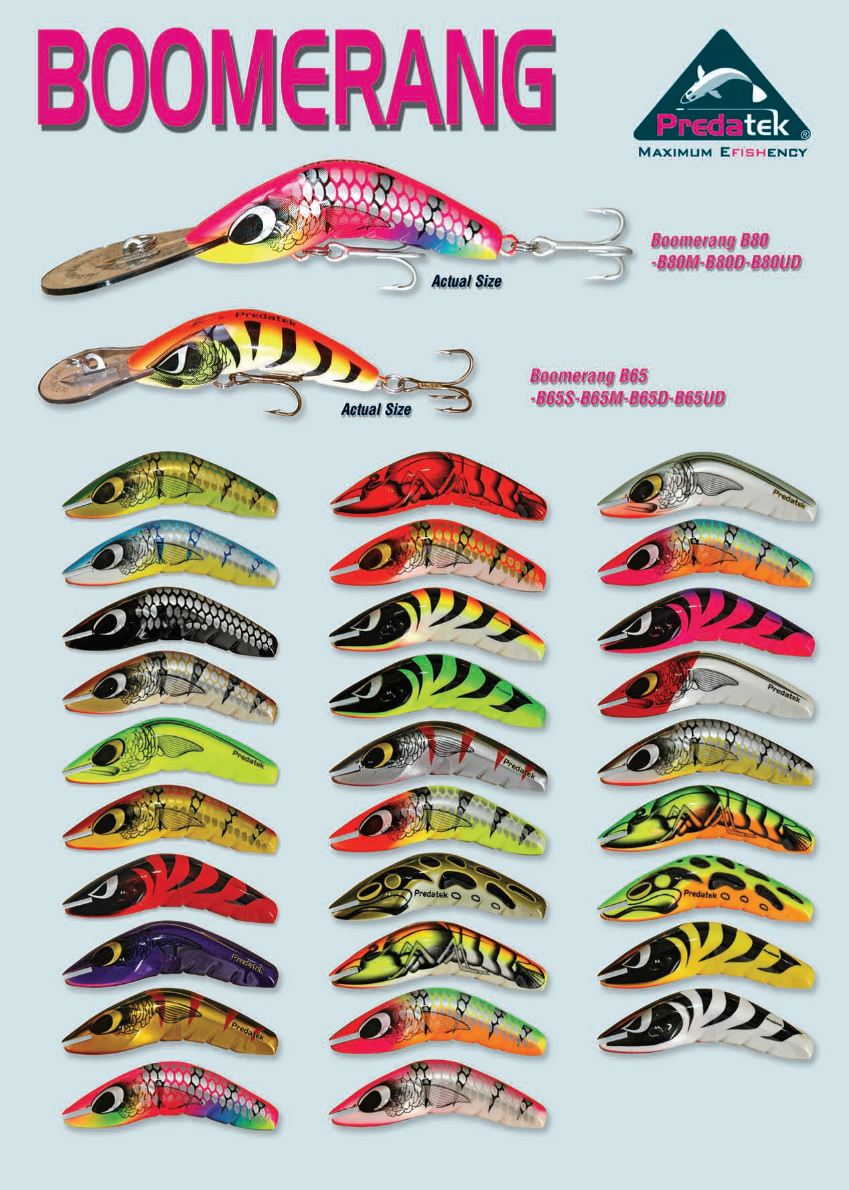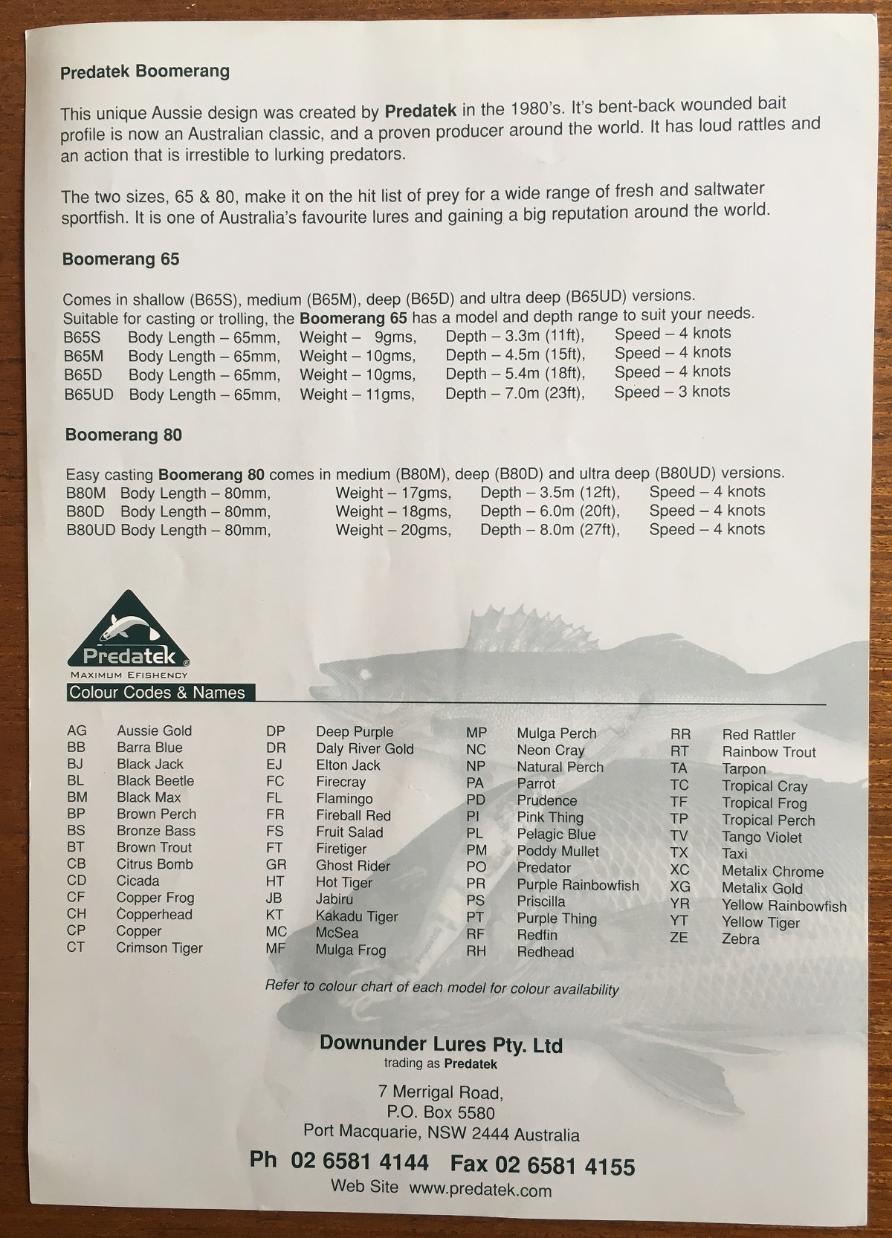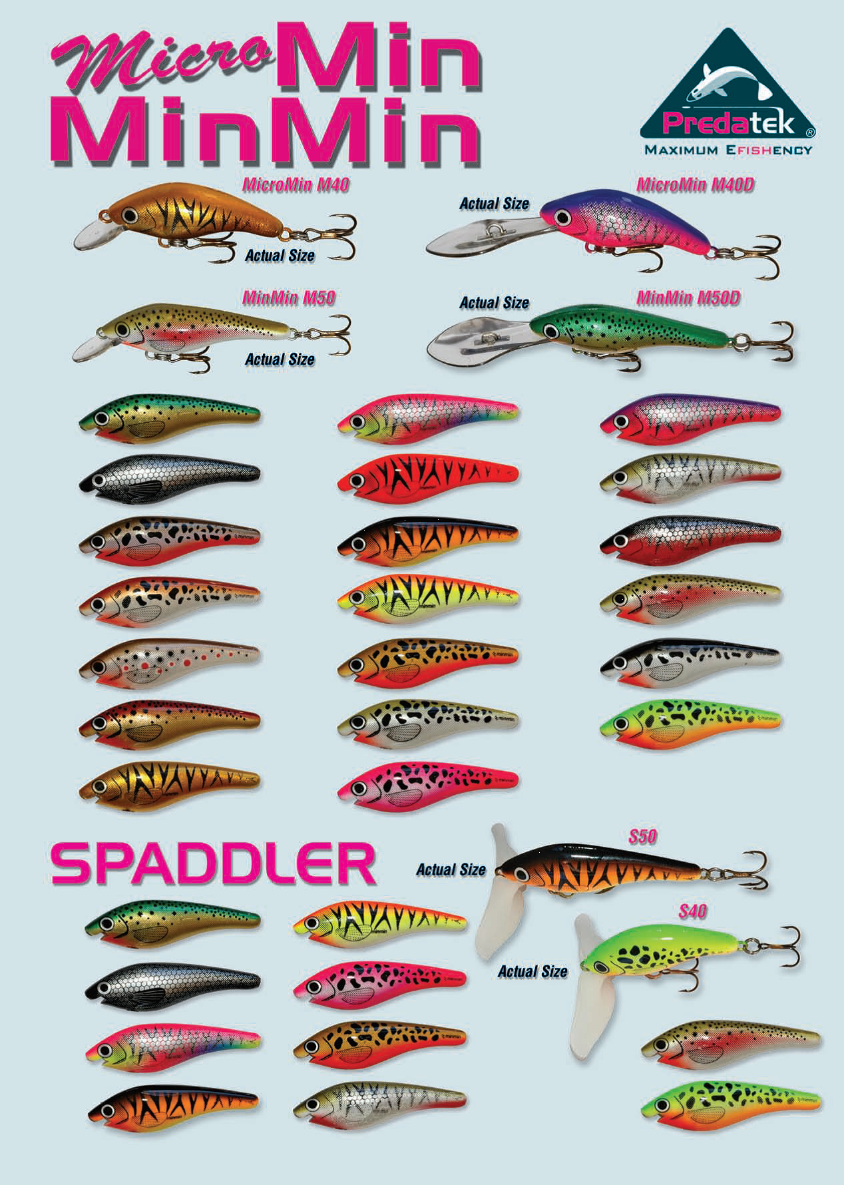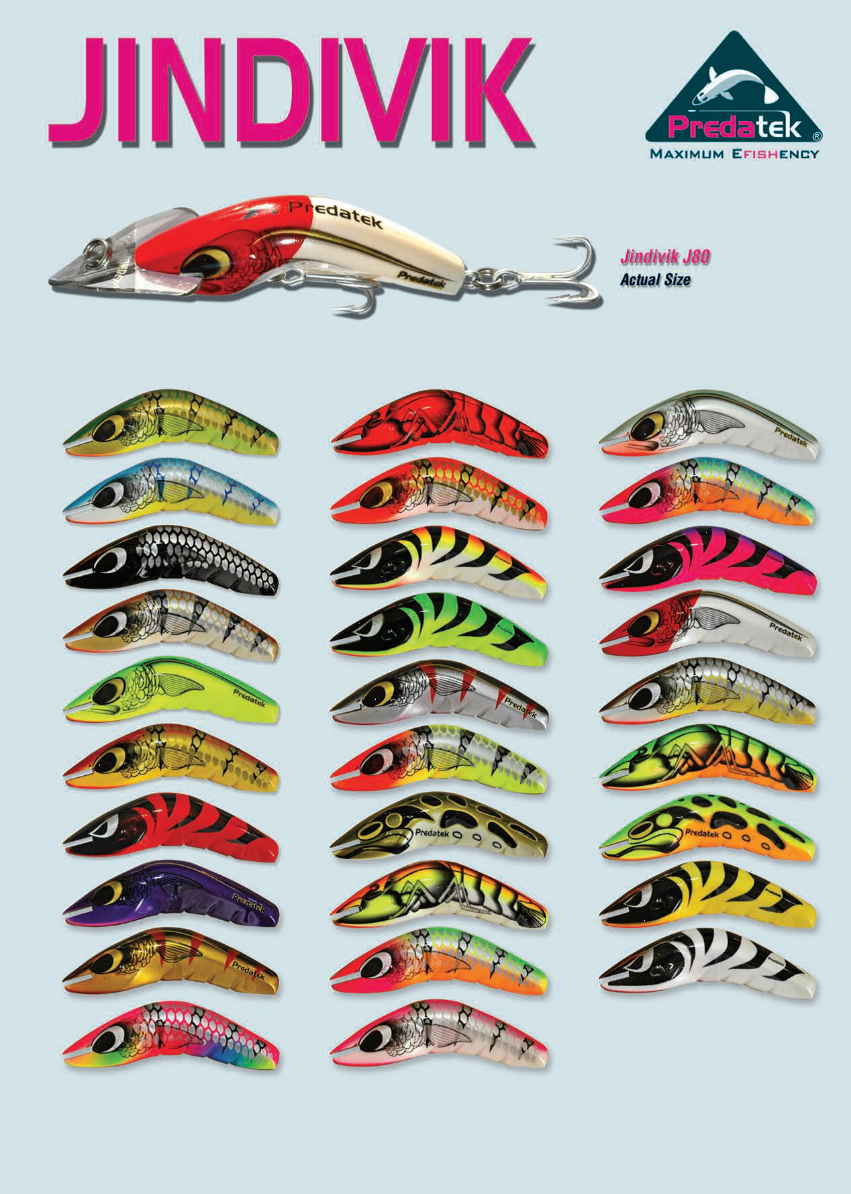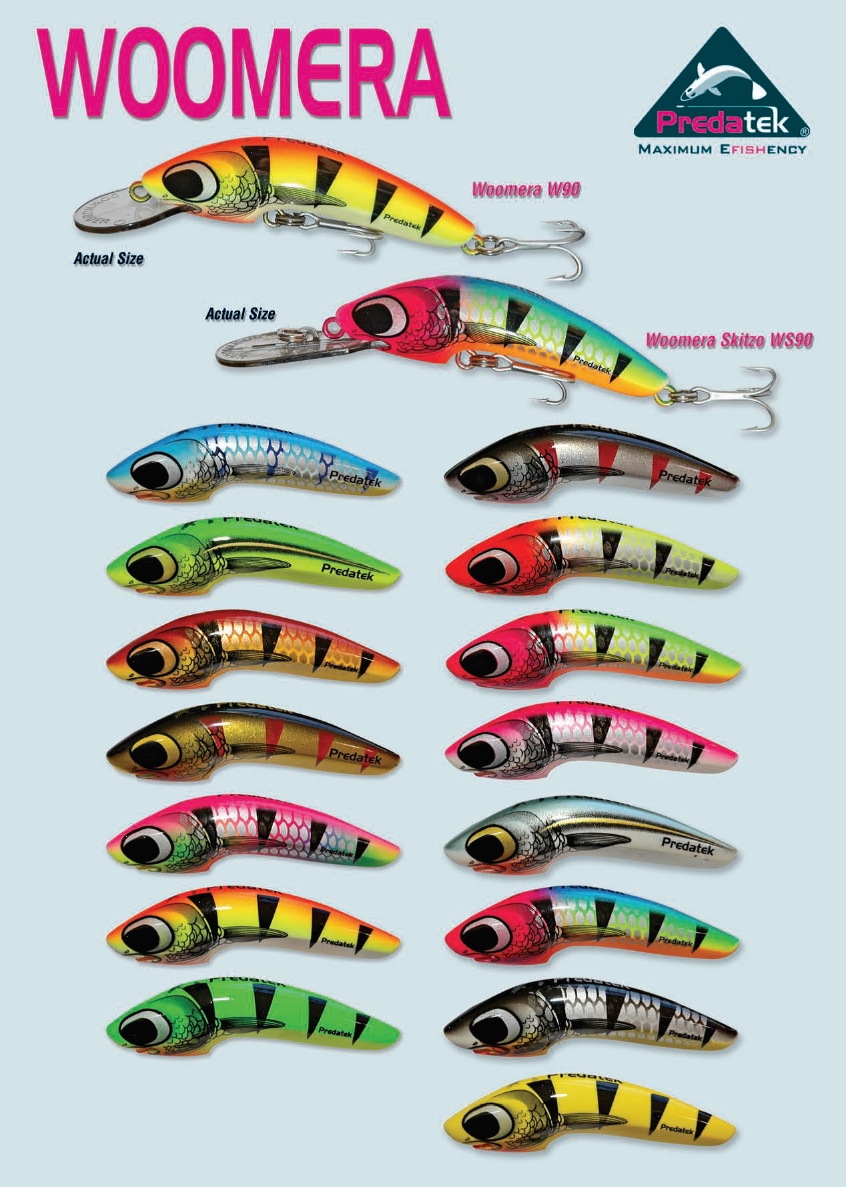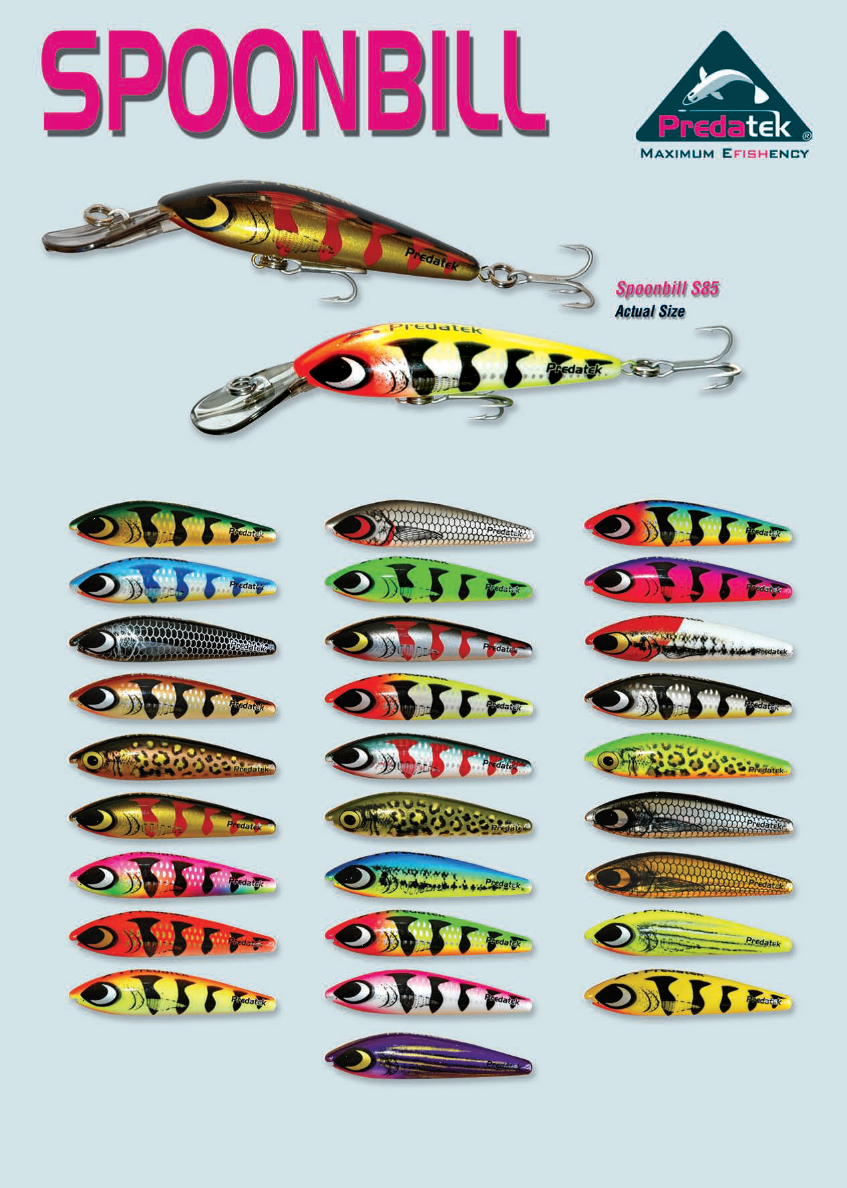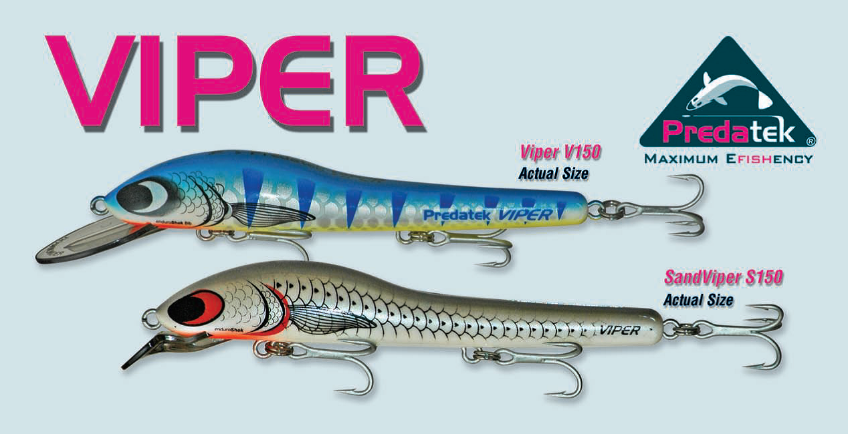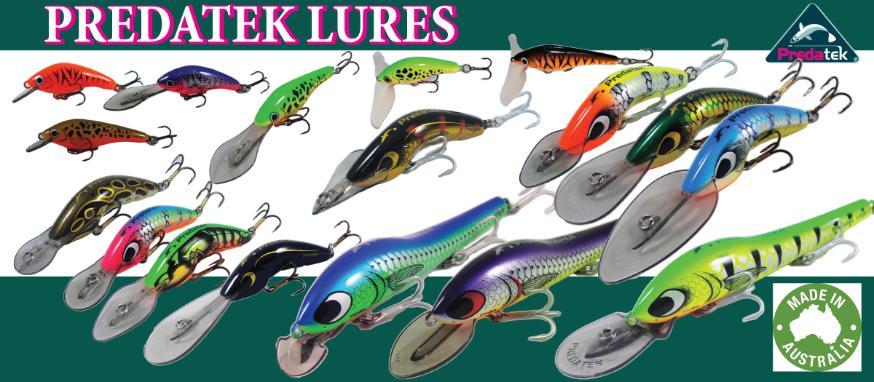Downunder Lures
*Banner Image - Early timber Boomerang
Downunder Lures - NSW:
Robert Smith, Frank Gaukroger and Kevin Clark are the names behind Downunder Lures and the famous 'Boomerang' lures model. At the time the forward thinking owners decided to register the brand name with the then named Corporate Affairs Commission and looked to patent the design. The original 'Boomerang' lures were hand carved from Australian red cedar and had Lexan bibs. The lures aimed at attracting native fish like Murray cod, golden perch and were designed to reach fish sitting deep in the water column ( at the 5m+ mark).
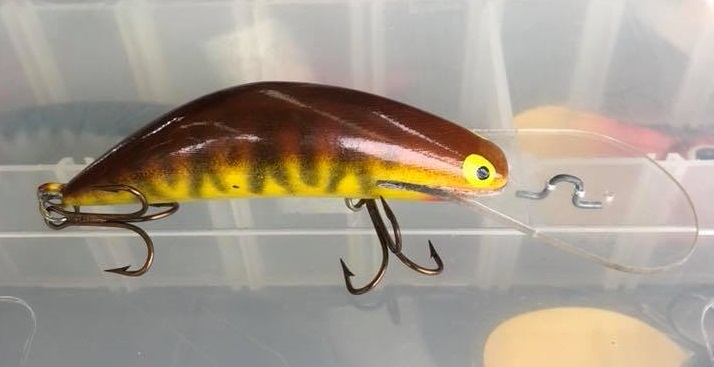
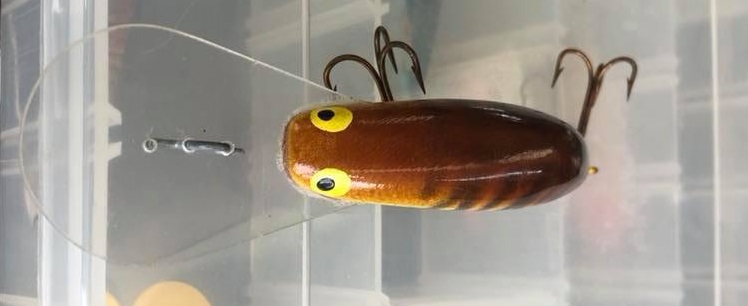
Early Siren Boomerang Lures including packaging
Robert Smith posted the following information about the history of Boomerang Lures on the Australian Lure collectors Facebook page in February 2018 after the above lure was posted asking for information;
"The original Boomerangs we made in Inverell were packaged with the brand-name 'Siren'. We later changed the brand to 'Downunder'. We started making lures in 1986, so the lure pictured would be one of the early hand-made production runs that were painted in a small room inside the smash repair section of Gaukrogers Holden dealership in Inverell. The lure may have been sold as a 'Siren' but without packaging it can't be proven. In those days we sold direct by mail order. By the time we were selling the lures in shops, they were branded 'Downunder'.
I am the designer of the lure: the bent body; tapered tail; and sharp-angled head profile with bib slot bisecting the head. This has never been disputed. The design was registered with IP Australia in my name. The V-shaped belly was a later modification of mine introduced to give the Boomerang an even more distinctive shape. I made a drum-sanding jig to shape the bellies, as well as jigs to shape the Lexan bibs. The lure blanks were cut out of Australian red cedar using a bandsaw."
History about urathane moulding;
We only made about 1,500 before going into urethane moulding. Most of the wooden ones would now be history (lost or chewed). Incidentally, we invented the square 'staple' tow-point, and the steel plate version. Both now widely adopted by other lure makers/manufacturers.The grooves in the belly were an enhancement afforded by urethane moulding. I have a wooden prototype into which I carved the first grooves. But this was too time-consuming to do in a timber production lure. We added it to moulded lures and have been doing it ever since.
The blunt, squared off tail of the urethane lure was a limitation of the moulding process used by Lively Lures (sub-contracted to produce our lures) in those days. We were not happy with the look. Same thing applied to urethane MinMins. Although we invented the 'staple' tow-point, Leigh Boileau (Mirrorspoon & Bladerunner Lures) helped us refine it into the spring style 'omega' clip. Leigh manufactured these components for us at his house at Tivoli, QLD. Leigh also punched out our metal tow-plates until the die gave up the ghost. We now have them made overseas.We met Leigh, a lovely bloke, through our association with Lively Lures and 'The Aussie Baitfish Range' of lures from different manufacturers (incl. Gordon Fallon and Mal Florence) in the late 80s. Mal and Leigh have both passed on."
History about lure making process and 'Cyclops' eye when Debbie Dare asked the following question - 'Rob Smith could I ask what the story is with the Cyclops eye under the chin of the timber boomerangs and the three holes for tow point'
"A pin in a sanding disc jig went through the extra hole in the piece of Lexan to allow the Lexan bib-blank to be rotated on it to achieve a perfectly circular shape for the front of the bib. That hole wasn't in a good position to act as one of the staple anchor holes, so we drilled two extra holes on purpose. . .
The idea of the 'cyclops' eye emerged from my studies of animal behaviour at uni. The eyes of prey species are often targets for predators. Witness the prominent eye-spots that some butterflies have on their wings. A predatory bird can be distracted by the spots and strike at them. This reduces the risk of injury to the butterfly's thoracic region and increases its chance of escaping.
Those of us who make fishing lures often go to a lot of trouble to decorate our lures to make them more realistic or attractive to......fish?.........or is it anglers? The fish generally don't get much of an opportunity to admire the artwork when they strike from below, particularly if the belly of the lure is plain...like the bellies of most prey animals. So, I reasoned that putting a cyclops eye under the chin of the lure would give predatory fish something specific to target. And on a wobbling, hard-bodied lure, the action of the lure makes the cyclops eye oscillate, improving the impression of movement. Also, having a cyclops eye on the lure makes it look more like an injured fish that swims on its side, or floats on the surface on its side. That's likely a more significant benefit. I have noticed over the years that most cod and golden perch have been hooked on the belly hook. They go for the engine room (the head and thoracic region) not the propeller (tail). So, those are the ideas behind the cyclops eye.
I hasten to add that predatory fish don't really need our help to zero-in on a victim. Cod and barra, and many freshwater species, are supremely capable of locating and smashing prey in water where OUR visibility is zero.Nevertheless, I always felt that I fished better with a lure that I had confidence in. Little touches like the cyclops eye were probably of more benefit to me than the fish I was trying to lure! But don't underestimate angler confidence as a factor in fishing success. . . we only did cyclops eyes on the later model Boomerangs (with V belly and flat under-chin) just before when went to urethane moulding. Perhaps there were only a couple of hundred with cyclops eyes. I made one Magnum wooden Boomerang as a prototype and fished it in 1987 Australian Inland Fishing Championships at Copeton. No magnums were made by Downunder Lures as production lures. Magnums were made by copyists. They are not 'genuine'."
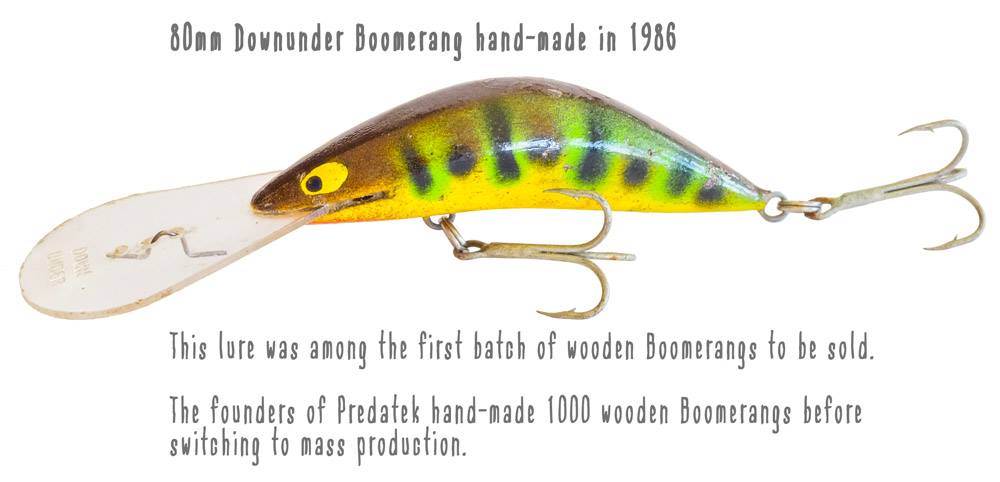
Above is from the Predatek website which has the whole history of Boomerang leading up to the modern day range. It provides a comprehensive year by year run down starting with the early production in 1986 up to the present Predatek range.
https://www.predatek.com/the-predatek-story
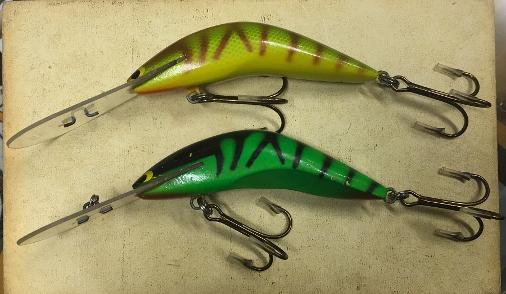
Above photo shows the difference between a Siren Lure (top) and an early Downunder Lure (bottom) that has the rear scalloping of the body. Siren's will have a smooth body and square tow point and are essentially an early Boomerang Lure. Both of these lures are timber
Early timber Downunder 'Boomerang' lures are rare and will have a 'square' front tow point and no scalloping of the rear belly section like later moulded versions. Collectors place these lures in high demand due to the iconic part they play in the history of Australian lures and due to their design and construction. The earliest type of packaging was the one below which was stapled to a clear plastic bag with P.O address at Inverell, NSW.
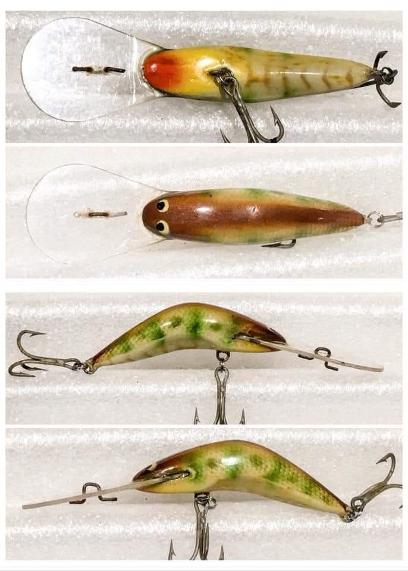
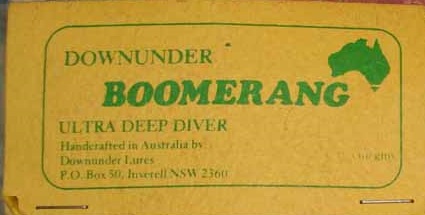
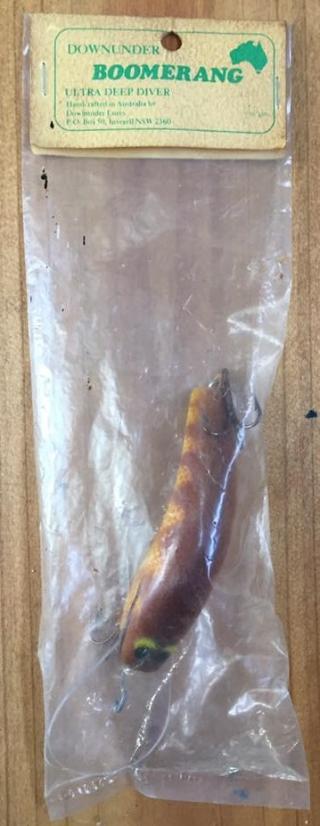
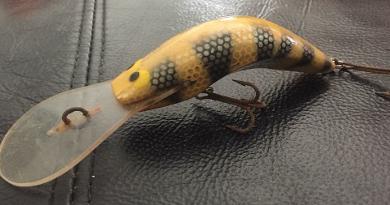
Paperwork for a 1989 Boomerang with three fine examples. This was posted on the Lure Lovers forum September 2016.
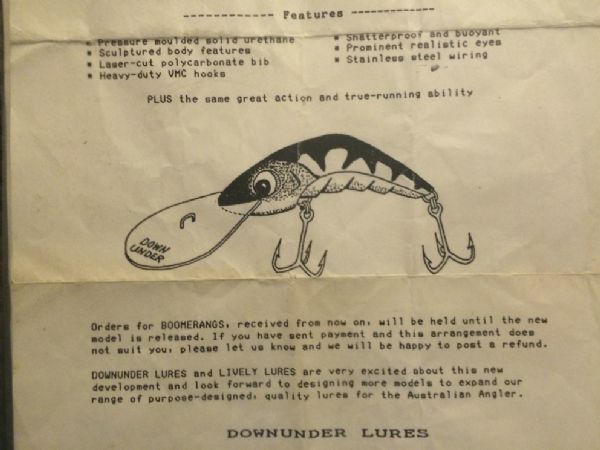
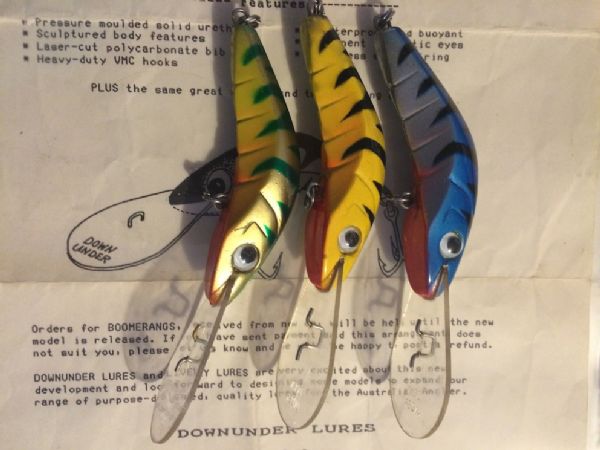
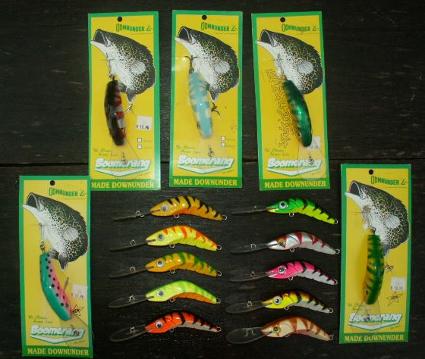
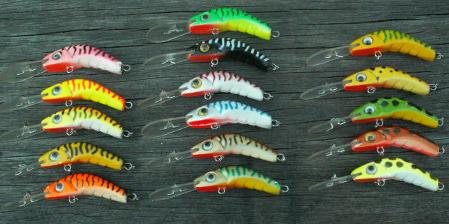
Downunder Boomerang 60mm

(Left) Four early models including a magnificent spotted dog pattern which is not a catalogued colour.
(Left) Early moulded 'Boomerangs' showing cards before the Lively Lures cards shown below. There was a vast range of colours and colour variations in the Boomerang range if you include early timber models, urathane and later moulded versions. Lively Lures were contracted to produce the 'Boomerang' in February, 1989.
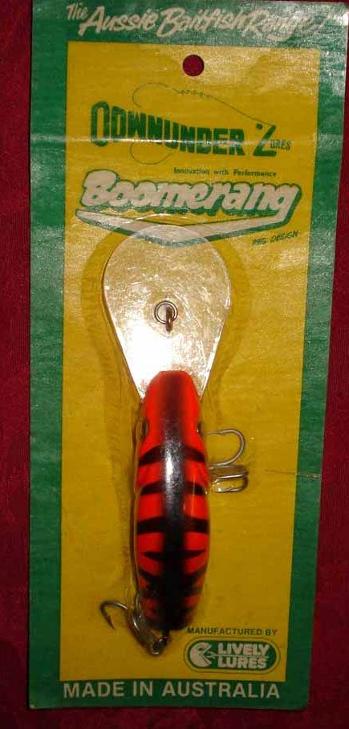
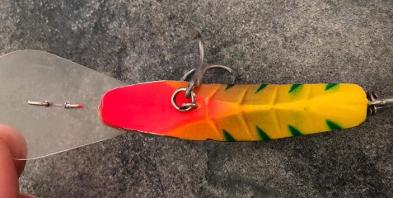
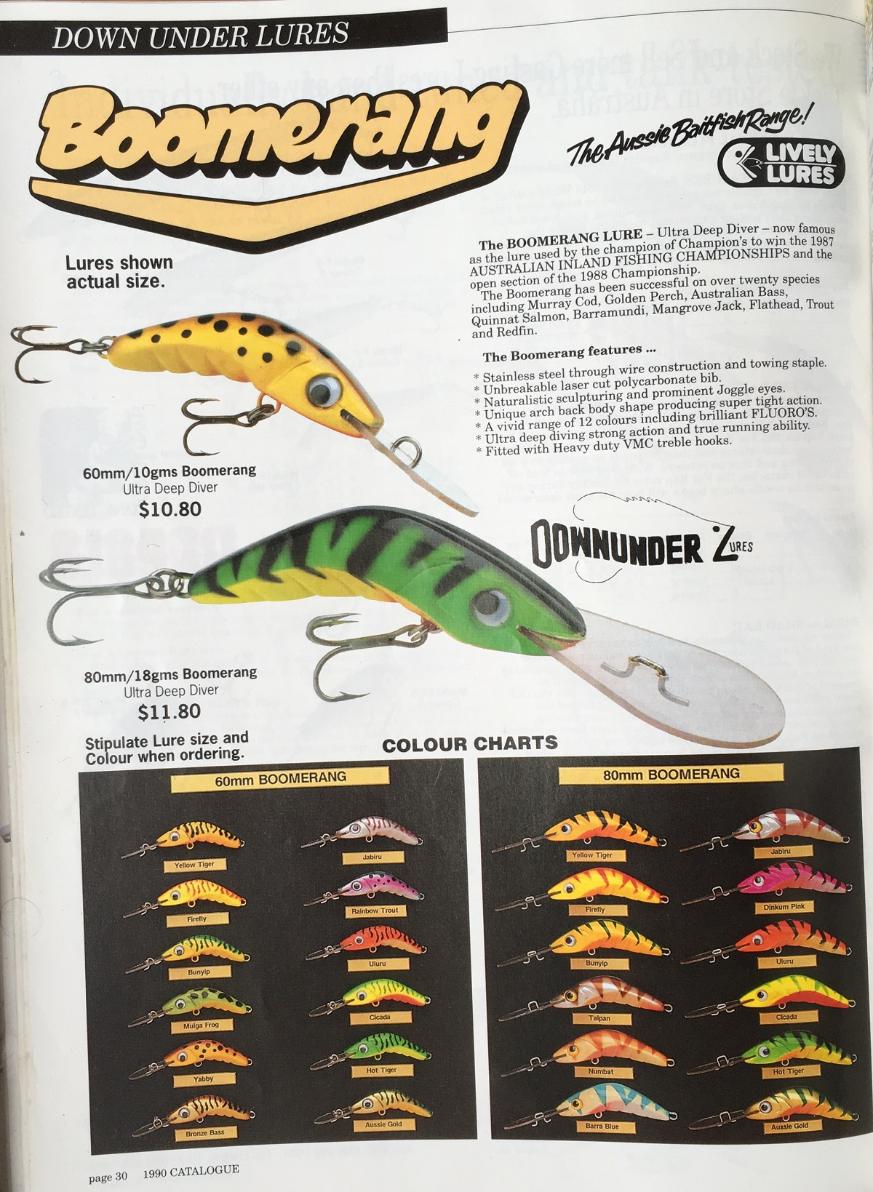
The Harbord Tackle catalogue 1990 showing the Downunder range
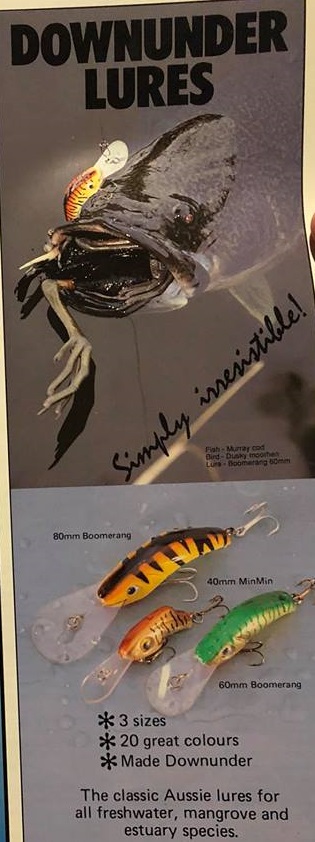
Above is the classic early Downunder advert featuring a Murray Cod with bird in mouth as well as lure. Mentions 20 colours available.
The 1990 Harbord Tackle Catalogue lists the moulded versions of the 'Boomerang' lure as an ultra deep diver in two models at 60 mm (10g) and 80mm (18g). Both models available in 12 colours including fluoros.
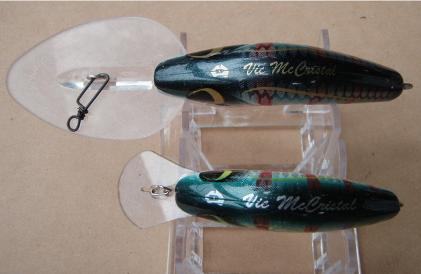
Earlier 'dolls eye' models of the Boomerang illustrating the high quality paint finishes and details c. 1990's
Credited as winning the 1987 Australian Inland Fishing Championship and Open Champion in 1988.
(Below) Advertisement showing the Boomerang models that were available c.1992 with a recommendation from Vic Mc Cristal.
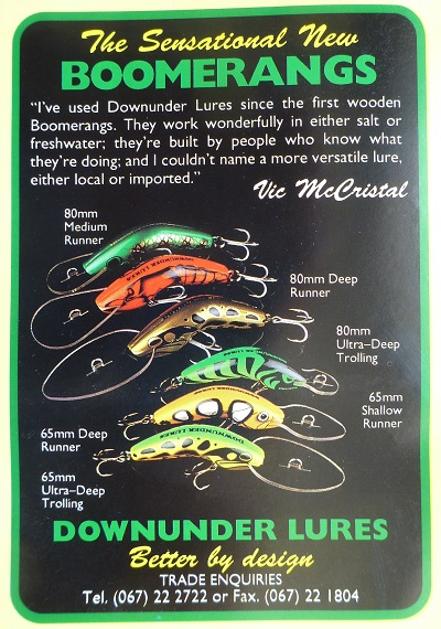
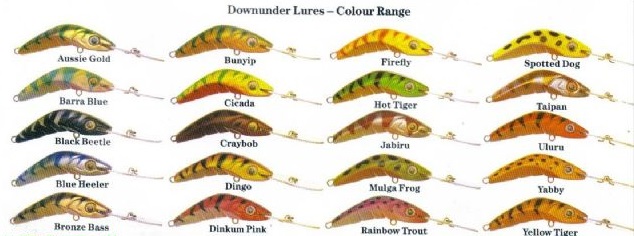
From Lure & More forum:
'During the eighties the Downunder team fished with Vic regularly who, after seeing how effective the Boomerangs were, used that lure extensively. At a time when tropical lure fishing largely centred around casting shallow running minnows to snags, Vic had extraordinary success with the deep running timber Boomerangs. He started regularly catching those lovely big fingermark by trolling Boomerangs through the deep holes in his favourite creeks. Boomerangs subsequently appeared in photographs in many of Vic’s magazine articles.
When Downunder Lures began pad printing the designs on their lures they asked Vic what his ideal colour scheme would look like. The result of that discussion was the McSea pattern which, as a mark of respect and recognition bears Vic’s signature.
The McSea scheme had nothing to do with trying to break into the impoundment barra market. Vic had retired from writing before the first Tinaroo barra was caught. The Predatek Vipers were indeed the lures that opened the floodgates in that fishery and subsequently many other barra lakes, because they are brilliantly effective. Not because of any words written about that particular lure by Vic, simply because he’d stopped writing prior to the release of the Vipers.
The McSea colour scheme pre-dates the release of the Viper by about three years and was first introduced in the Jindivik, then the Woomera.
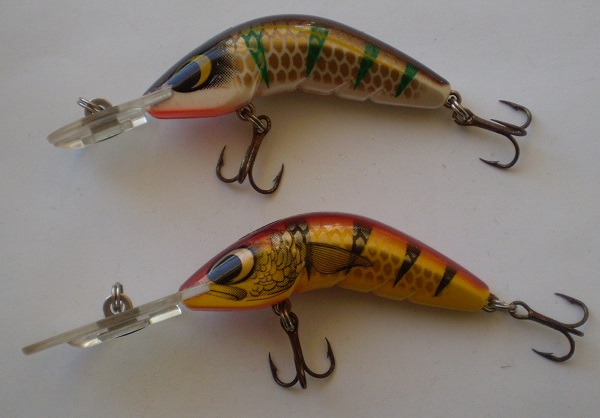
Later stamp Boomerang with omega tow points
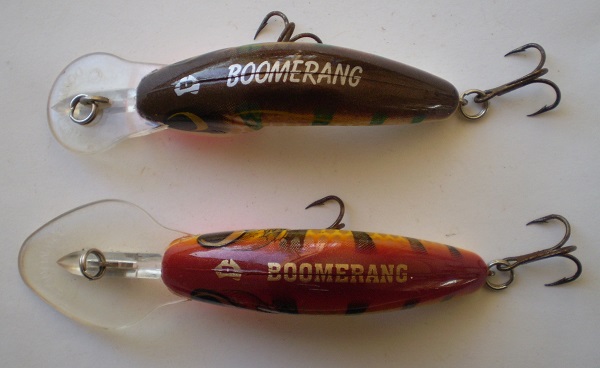
Right shows earlier pictorial cards which were printed for each model and in different colours over the years. Note earlier bib towpoint and pad printed eyes.
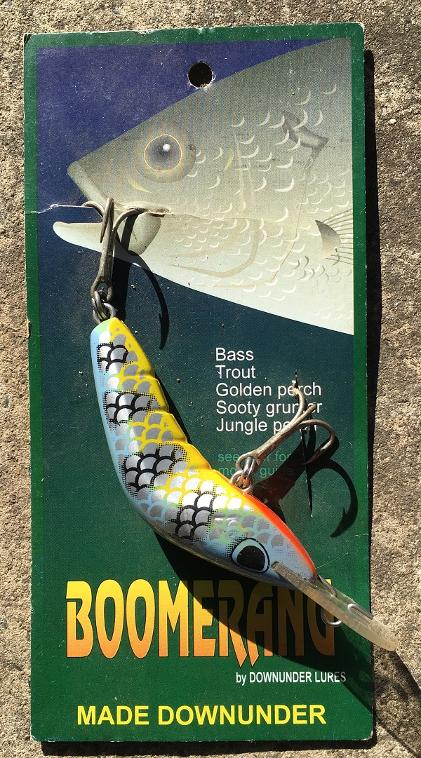
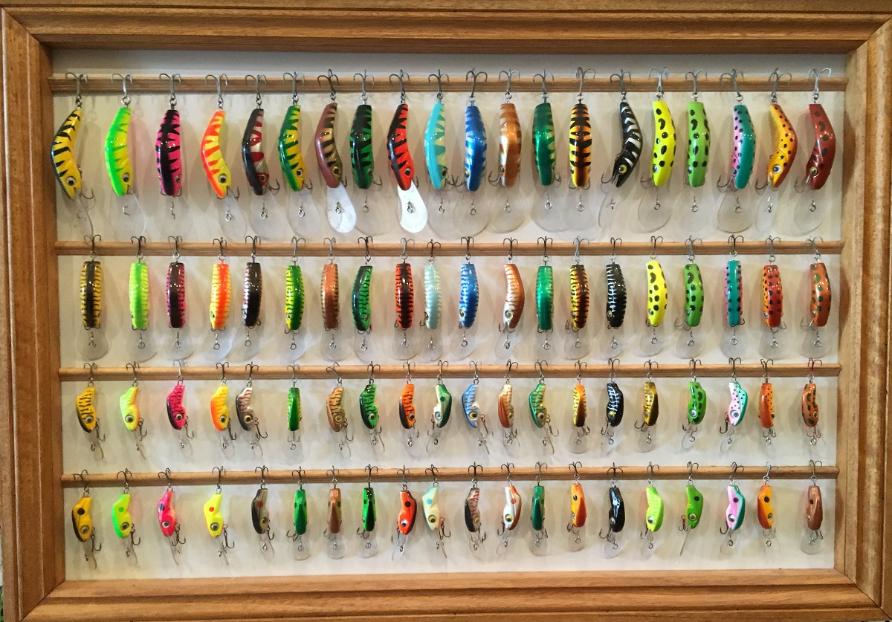
Downunder early urathane 'Boomerang' and 'Min Min' model
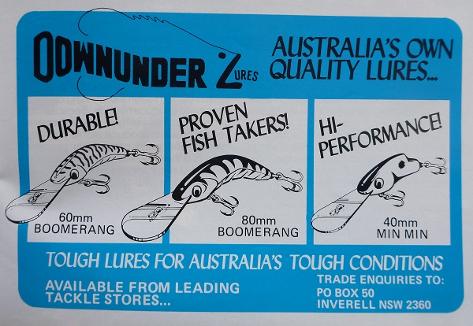
(Above) An early advertisement for Downunder lures c.1988 showing early Min Min shape which was changed in the 1990's for a more stable action.
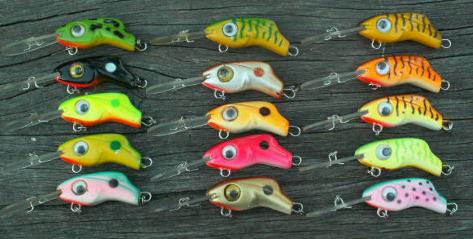
Downunder Min Min 40mm
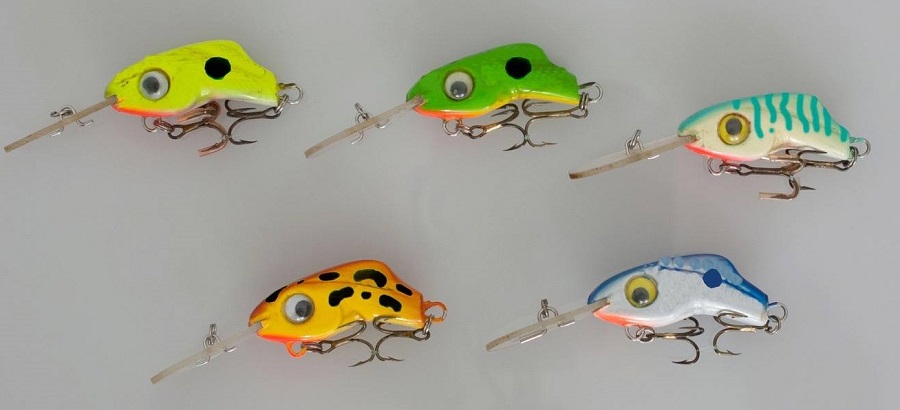
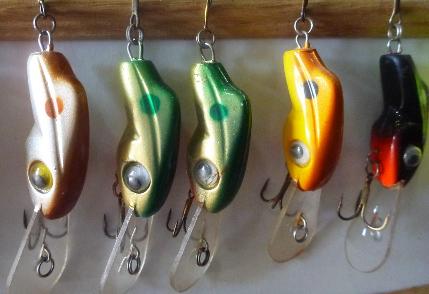
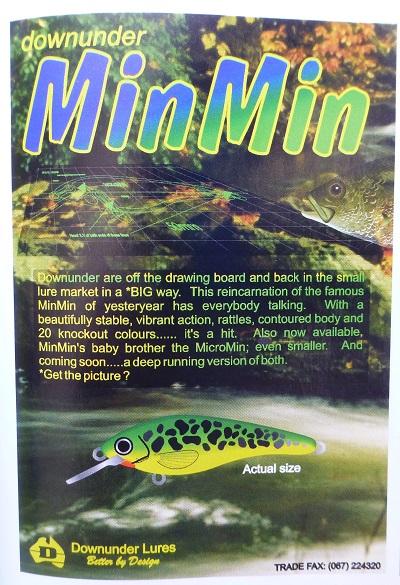
The advertisement for the new redesigned 'Min Min' c.1996. This model is still made today under the Predatek label.
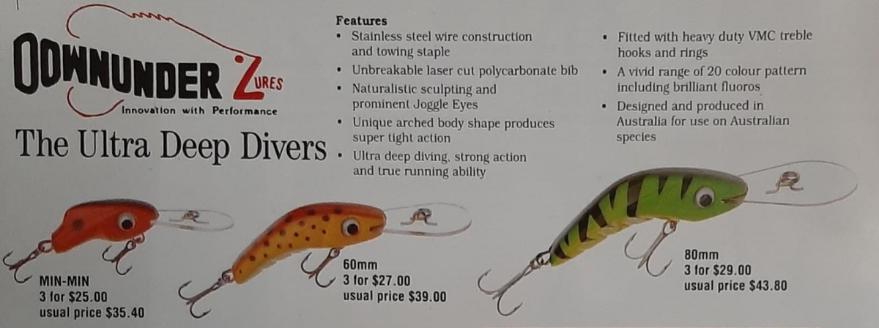
Harbord Catalogue for 1990 introducing the early shaped Min Min
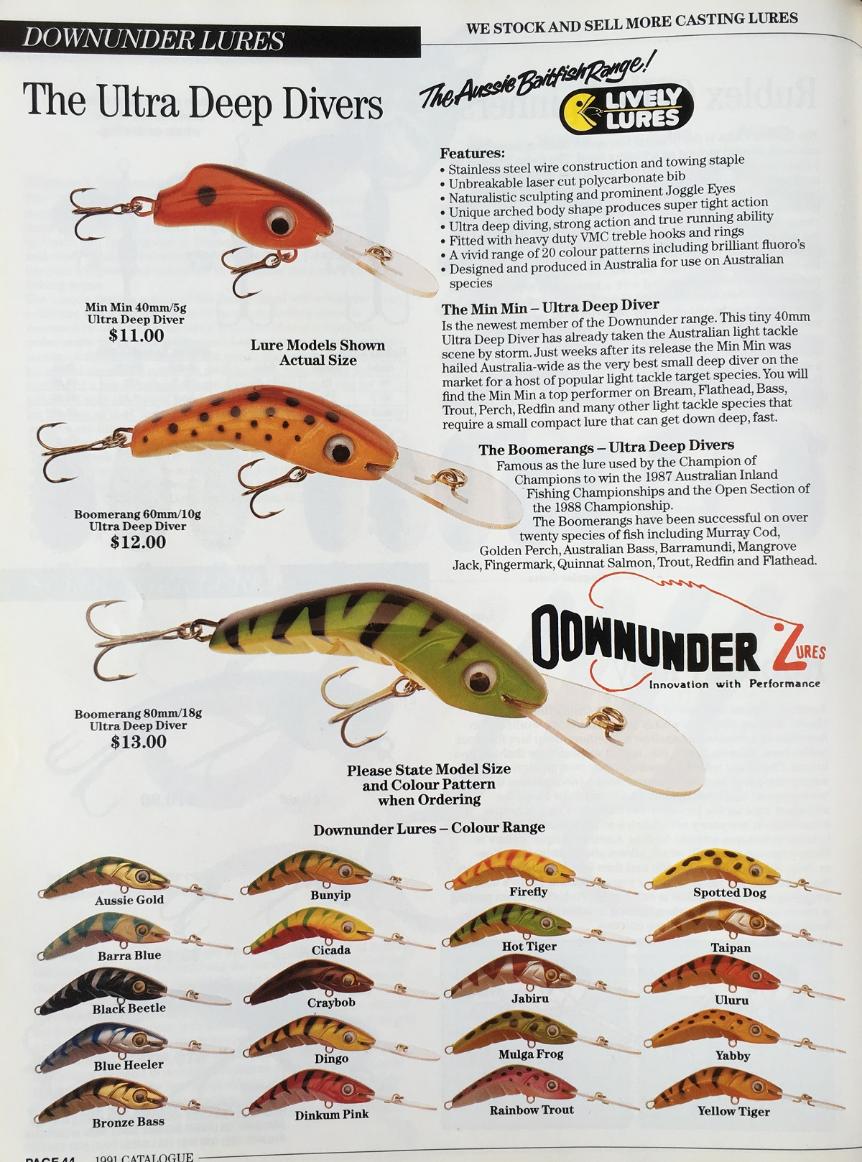
Harbord Catalogue for 1991
Three cards for the Downunder 'Woomera' including the Mc Sea version below left
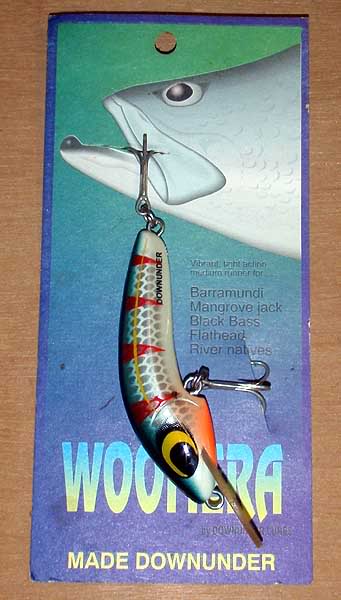
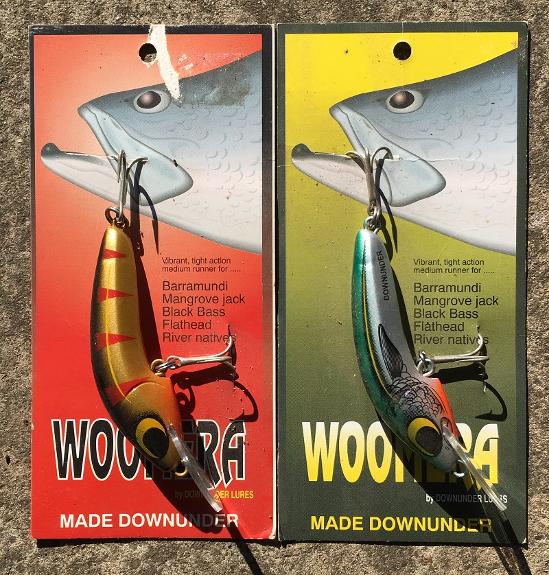
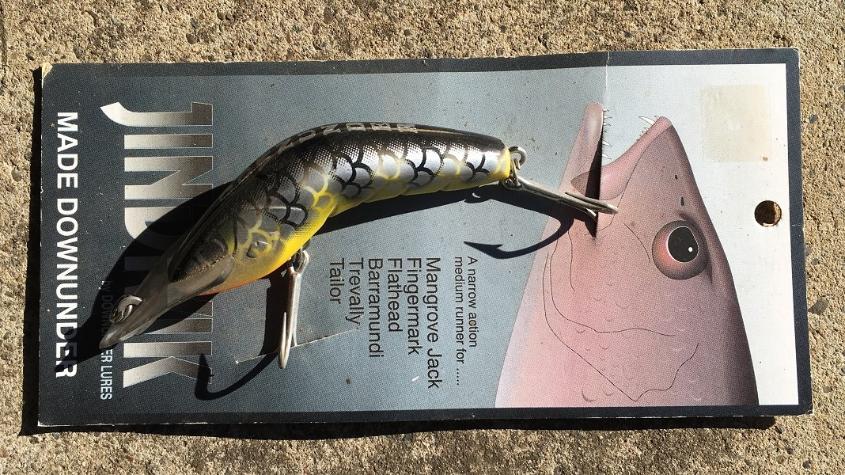
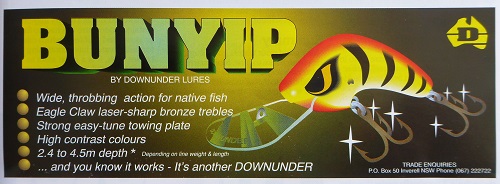
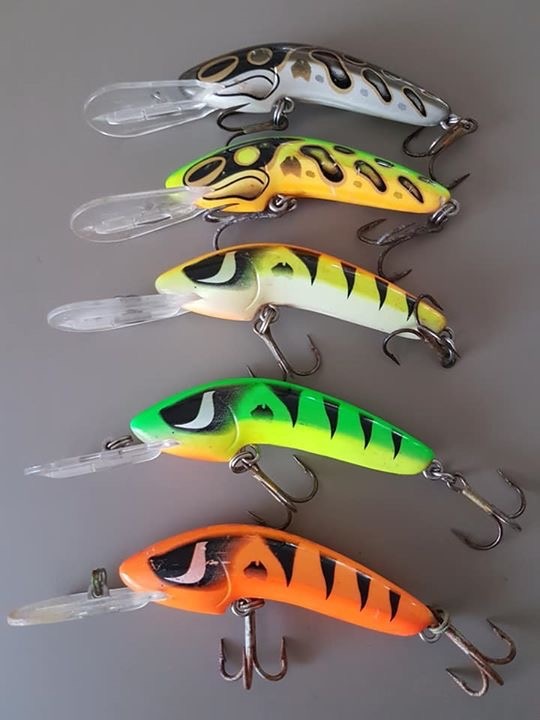
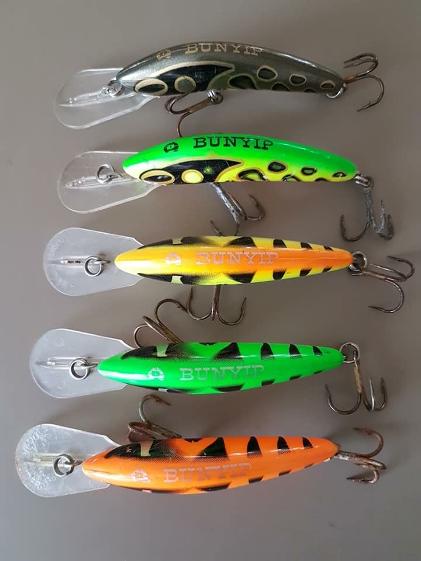
The Downunder 'Bandit' is another model that was released around the same time as the 'Bunyip'
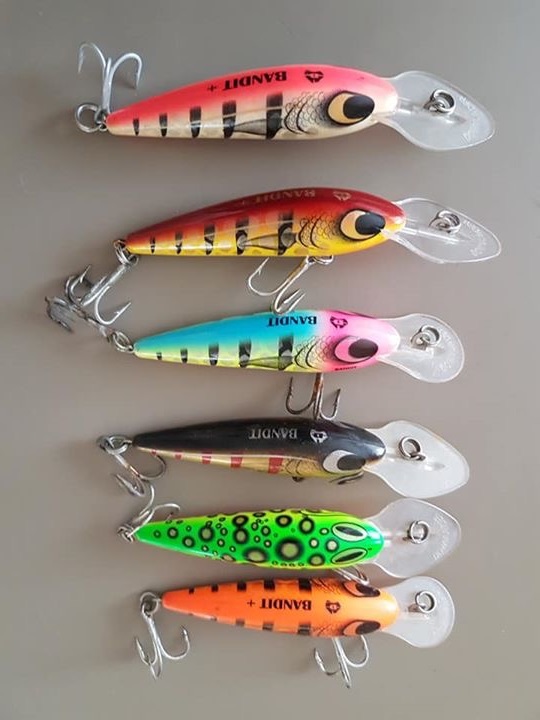
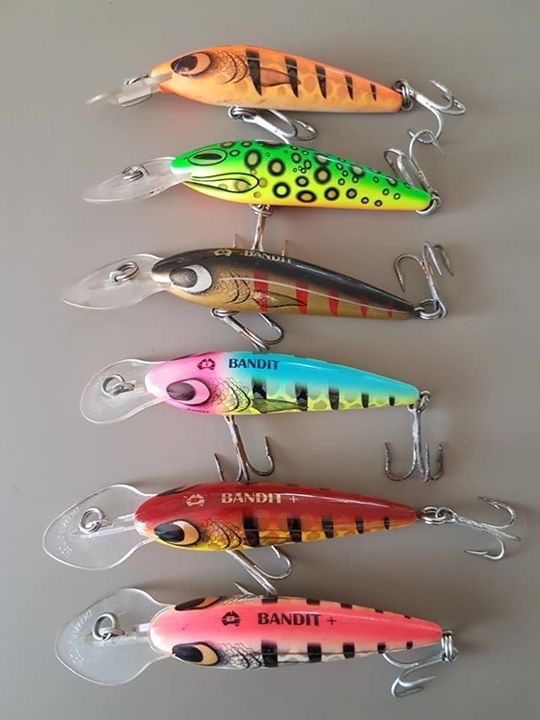
The Downunder Story - this paperwork was released to retailers and gives the Downunder story as a short summary. This classic piece of history was kindly found and shared by Laurie 'Oldman' Banks.
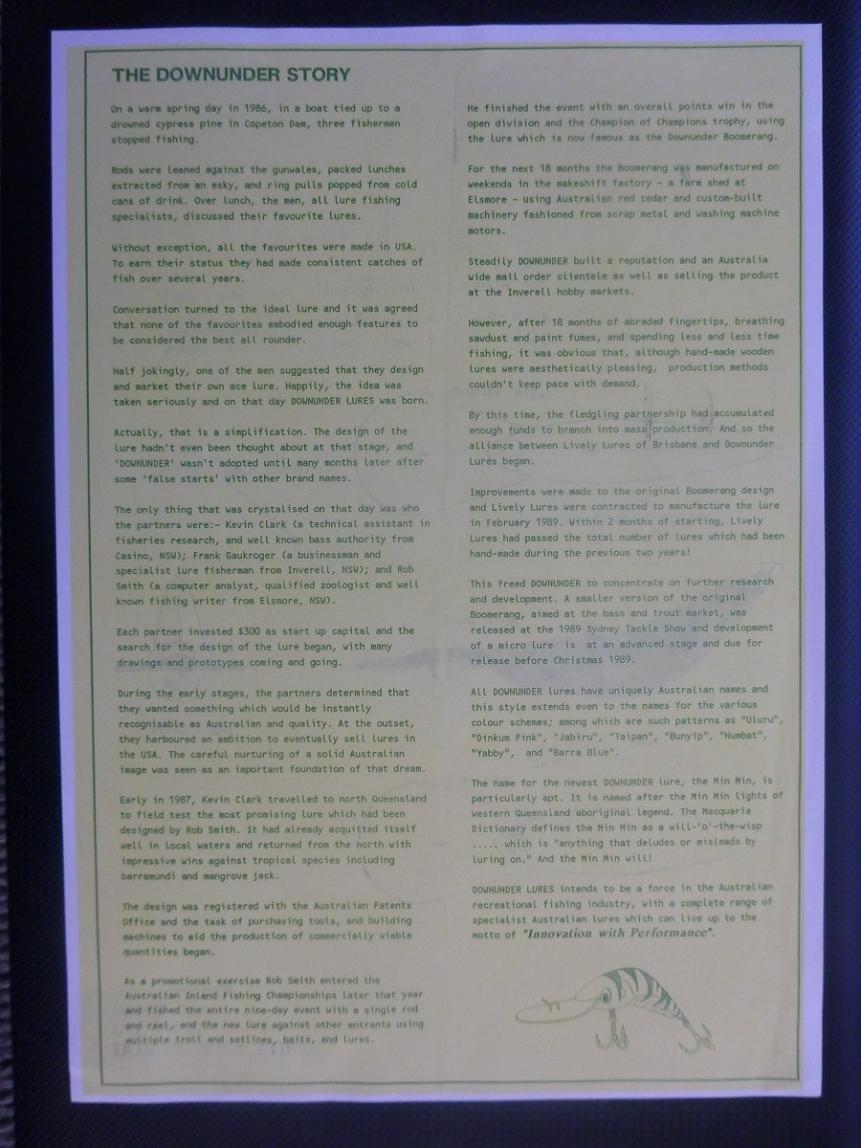
The reverse of this paperwork had some interesting information and insights into the Downunder lures.
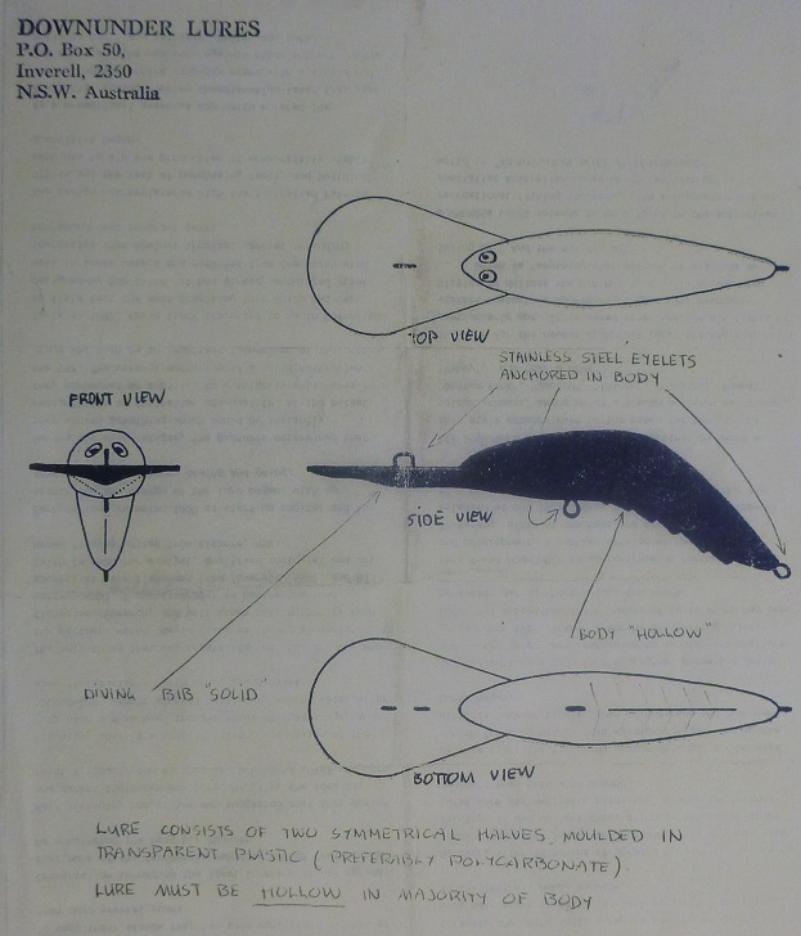
A couple of clippings from c. 1993 with the one on the right having a recommendation from Vic Mc Cristal himself.
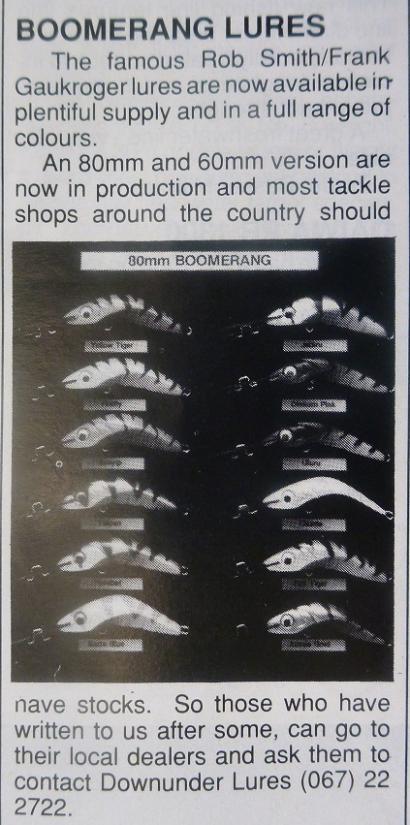
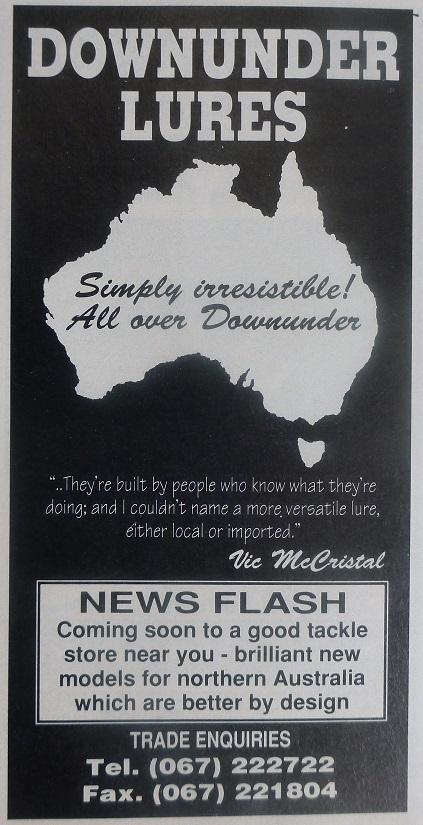
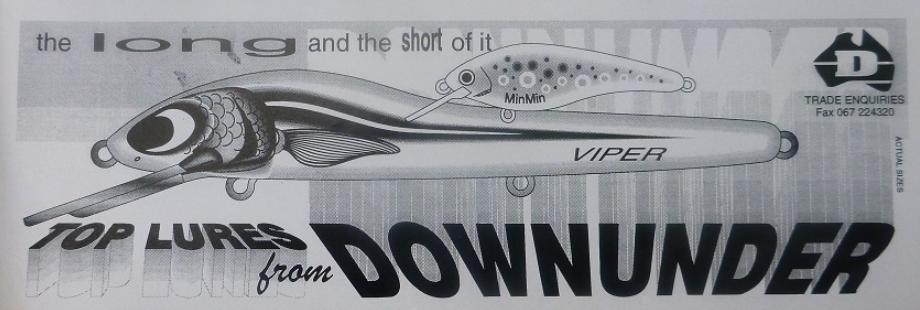
Advertisement c.1995 with the Viper and the redeveloped Min Min
The Predatek brand is now the face of the Downunder stable and continues to this day as one of the more progressive Australian companies producing a wide range of lure models including many of the originals including the well established 'Boomerang', 'Min Min', 'Jindivik', 'Woomera', 'Viper' as well as other models.
The images below are from the Predatek website showing part of the range and colours available in 2018
